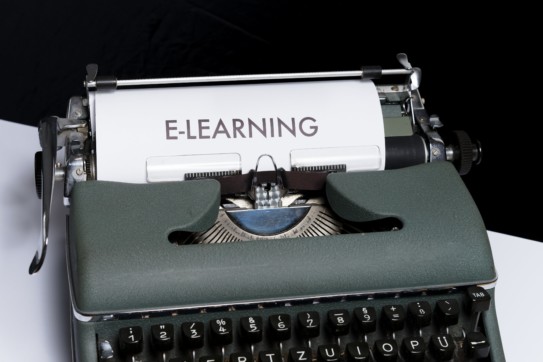Assembling the Right Team for an E-Learning Project

We’re heading into the “off-season” for many nonprofits. Once year-end fundraising passes and we’re in the new year, your nonprofit is in position to focus on development activities—including training your staff and volunteers to reach greater heights in 2022.
If you’re reading this article, you’ve probably stumbled across the benefits of providing online training for staff members and volunteers. Improved staff and volunteer retention rates, fundraising and donor stewardship outcomes, and training engagement come to mind. And, we can’t forget one of the biggest benefits—online training courses replace in-person, instructor-led courses and all of a sudden, your learning and development team has significantly more time on its hands for other efforts.
You’re probably thinking it’s time to run, not walk, to incorporate e-learning courses into your training curriculum.
However, creating e-learning courses is a major undertaking. Approximately 90% of the cost is due upfront, and creating these courses can require a significant investment of time. Every aspect of the course needs to be carefully monitored and reviewed by multiple sets of eyes to ensure you’re creating a resource that will be valuable for your organization. Assembling the right team for your project is one of the best ways to set your course up for success.
Understanding the E-Learning Content Development Process
Before you can assemble your team, you should ensure you understand custom online training course development. Course development generally involves the following steps:
- Project start-up. Your e-learning content development partner reviews the training content you already have and works to understand your goals for the course.
- Design and develop course prototypes. The partner creates a prototype of the course to illustrate key design elements and the overall direction of the course.
- Write and review storyboards. The partner creates a blueprint of your course that outlines how the course will achieve your learning objectives. Details such as interactive elements, assessments, and visual elements are included.
- Develop and review course. The partner develops the course and provides it to your team to review and provide feedback.
- Conduct quality assurance testing. A team of course testers closely reviews the course for user experience, ensuring the technical functionality and information included are both high-quality.
- Publish course. The course and accompanying course files are delivered to your team and published on your distribution software.
What you don’t see in this breakdown is the many rounds of review and coordination required between teams. From your key stakeholders, to your internal review teams, to the e-learning content development partner itself—multiple hands are handling this project and providing input at every single step in this process.
If you want to create an effective course (rather than a major headache for everyone involved), you’ll want to assemble this team wisely.
Assembling Your E-Learning Team
Key Stakeholders
Key stakeholders refer to the people who need to “sign off” on your course, such as your nonprofit’s board and executive leadership. Without this team’s approval, you won’t be able to access the funding necessary to bring your course to life.
Admittedly, just like you can’t choose your family, you can’t cherry-pick which stakeholders have a say in whether your e-learning project moves forward. So, you need to figure out how to get all of them on your side.
First, get your proposed e-learning project added to the meeting agenda for your nonprofit’s next board meeting. Send documentation about the project in advance, including what the course will cover and how much it will cost to create. If you can spice it up with statistics around why e-learning is effective, you’ll be off to a great start!
Consider chatting with individual board members before the meeting to gain their support—especially if they’re tech-savvy. If one of your board members works for a tech company, for example, put a coffee chat on their schedule before the full group meeting.
Subject Matter Experts
Subject matter experts (SMEs) are individuals at your nonprofit (or hired externally if you’re wading into new waters content-wise) who are the most knowledgeable about the content you’re creating a course about. You’ll want to bring them in on the project to inform the course content and make sure you’re including correct information.
For example, if you’re creating training courses for newly recruited volunteers, you’ll want to loop in your volunteer coordinator. They will have the most up-to-date knowledge of how your nonprofit’s volunteer program functions so the training content itself will align with what volunteers will experience on the job.
Your SMEs will work closely with your e-learning content development partner. For example, your e-learning partner might interview SMEs to gain a full understanding of the topic.
Course Reviewers
Remember how we said that at each step in the course creation process, the materials need to be carefully reviewed? Well, do you want the entire responsibility of reviewing a multi-module, perhaps multi-hour course to fall on your shoulders? Definitely not. Not only will that be a huge task for you, but you’re much more likely to overlook a cringe-worthy typo if you’re reviewing large chunks of content at a time.
Assemble a team within your organization that is dedicated to reviewing parts of your course as they become available. For example, you might assign each individual to review one module of the course. Or, you could assign review duties by expertise—such as having your graphic designer review imagery and branding, SMEs review relevant educational content, and so on.
E-Learning Content Development Partner
Technically, you can download course authoring software and create a course yourself. You can also technically write a novel or film a movie… but that doesn’t mean it’s going to be the next big hit.
An e-learning content development partner is a team whose sole purpose is to create courses that both meet your learning objectives and appeal to how your learners learn. They’ll bring technical course authoring and instructional design expertise to the table, so you’ll walk away with a course that teaches your staff members or volunteers to do their jobs better.
When you invest in custom development, your partner can:
- Manage your e-learning project from start to finish, ensuring you hit all deadlines and benchmarks.
- Interview SMEs to ensure content is up-to-date and accurate.
- Build interactive and engaging learning elements, such as video, games, simulations and scenarios, and assessments.
- Ensure your course is accessible for learners with visual and auditory disabilities.
- Translate and localize courses as needed.
- Maintain your courses over time as needed.
These are general services offered by an e-learning partner. But what if you have a very specific vision for your course—one that involves intricate, multi-level games or even full virtual reality experiences? You’ll probably want to partner with an e-learning content development company that specializes in the specific type of course you want to create, whether it includes gamified learning, virtual reality, augmented reality, or something else.
There are many benefits of incorporating e-learning into your nonprofit’s training practices. But, don’t get hasty and rush into an e-learning project before your team is assembled.
It takes a village to bring a successful e-learning course to life, and you’ll want your key stakeholders, SMEs, course reviewers, and content development partner to all be on board before you dive into your next project.
